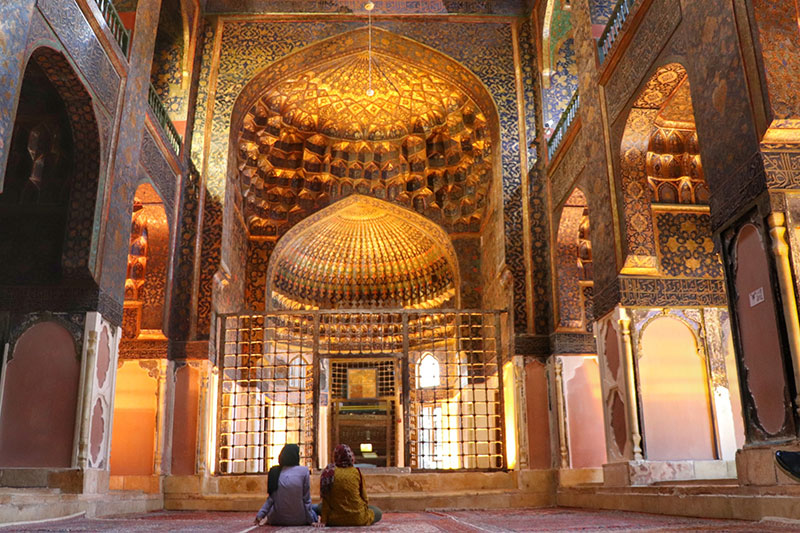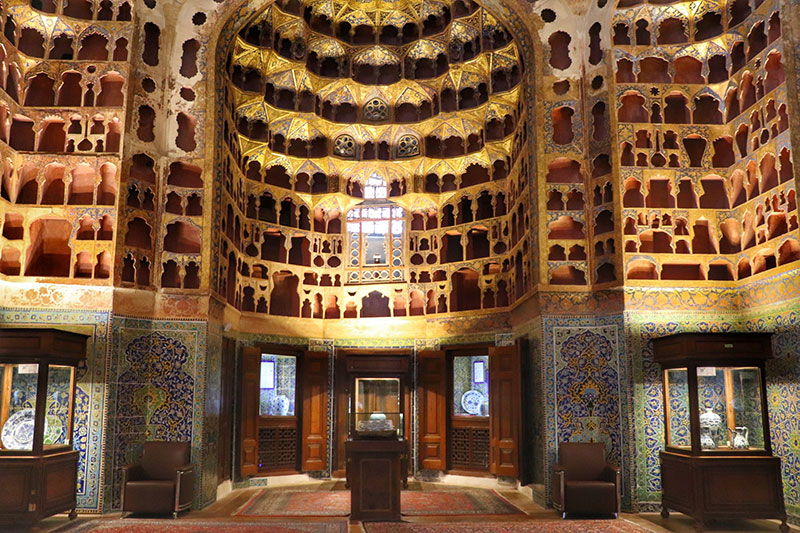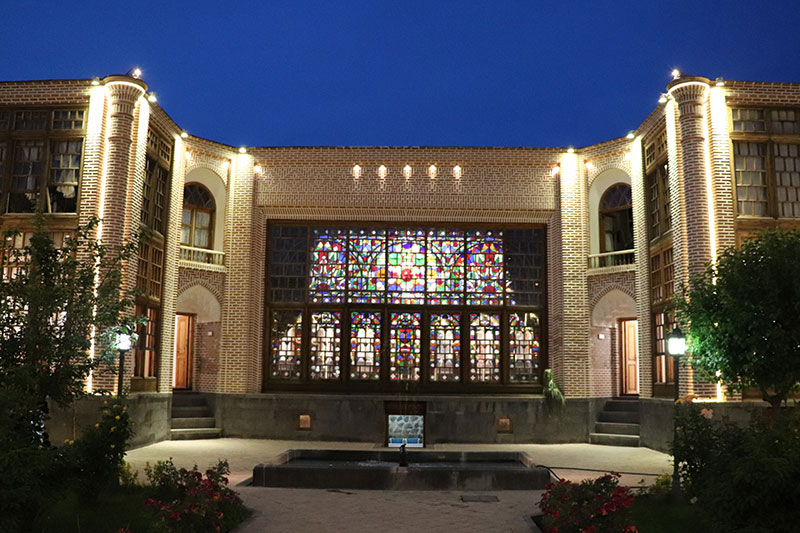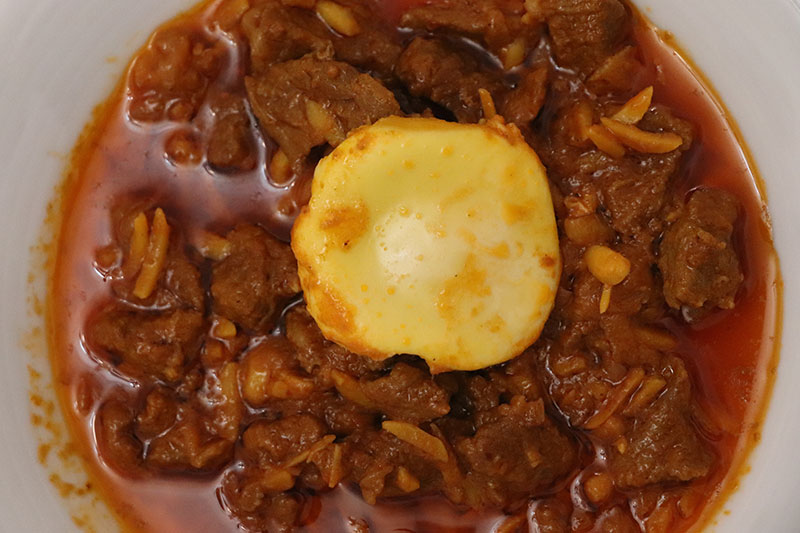 Signin with Google
Signin with Google Signin with Facebook
Signin with Facebook
Ardabil Ultimate Walking Tour
Explore the city of Ardabil through the offbeat attractions in a half day walking tour
Book
- Gallery
- Overview
- What you experience
- Available On
- Locations
- Features
- Necessities












Get ready to discover northwest of Iran, the utopia of ancient Sofism at the foot of sacred Mount Sabalan, the third highest mountain after Damavand. Go for a walking tour in the city of bricked mansions and covered bazaars in the vicinity of the Silk Road, the sweet dialect of Turkish Azeri and architectural masterpieces. Treat your taste buds to the different delectable types of Ash (Persian nourishing soups) and local foods.
Visiting one the most striking Sufism complex in Iran and getting to know the ancestors of Safavid Kings
Walking through old districts and distinguished neighborhoods and hidden time-honored mansion
Finding the pathless bathhouse, mosque, and beautiful houses in narrow alleys
Explore historical Bazaar and its different parts like mosques, Caravansaries and etc.
Visiting crafts workshops and learning to make some handicrafts like carpet weaving
Tasting delicious dessert (Qara Halva and fresh Doogh) and local lunch in some cozy cafés
Stepping on historical bridges and get to know some rituals and traditional customs
Learning about the history, culture, and stories of the city and people
- Meals: Traditional Ardabili lunch, special local dessert, herbal tea or sharbat drink
- Other services: English speaking guide, visiting crafts workshops
- Not included: Shopping, entrance fees, any extra meals or drinks, entry fees to the sites not stipulated in the itinerary, tips (optional), transportation from and to your accommodation, personal calls
- Comfortable walking shoes
- sunscreen
- Water bottle
Ardabil, a well-known city in Iran for its cool weather and Mount Sabalan has a lot of untold stories and myths. Listen to these memories from its golden age in the Safavid era to people’s lifestyle through history.
An integrated novel
Sheikh Safi mausoleum and shrine ensemble (World Heritage Site) opens a wonderful book in front of you, each page of this delightful novel narrates tales about Sufis and Sheikh Safi, the establishment of the Safavid dynasty, milestone wars of Iran, shrines and soldiers' gravestones, glazed tiled walls and inscriptions, in an integrated way.
In order to complete your information about mentioned stories and learn more about the archaeological background of the region, the development of the city, handicrafts and local arts visit the top museums of the city near the Sheikh Safi shrine.

A dynamic Bazaar
Ardabil was located along the Silk Road. Besides connecting the north of Iran to Russia and the Western countries this road was playing an important role in that most of the silk-producing in the Gilan region was traded through Ardabil’s bazaar and road.

The complex of Ardabil bazaar had been one of the most prospered trading zones and markets in the northwest of Iran, especially during the Safavid dynasty when some of its several caravansaries, mosques, bathhouses, and stores were endowed for the Shaikh Safi shrine and the proceeds were used for the shrine's upkeep. This covered Bazaar is still dynamic and alive which is preferred to modern shopping centres by the majority of locals.
Active handicraft workshops, the sound of hammering, small stores, wooden shelves and trolleys, and the smell of Persian spices and dried herbs may give you the sense of time travelling. Worth a try!

The glory of colourful sash windows
On your discovery of the old neighbourhoods, narrow alleys guide you to inescapable parts of Islamic-Iranian architecture; old and small mosques and public bathhouses. Mosques most of them do not have any courtyard and were built next to common people’s homes or introverted but luxurious houses of traders with breathtaking colourful sash windows. You will find all the old neighbourhoods and their elements compatible with the cold weather condition of the city.
Based on some unofficial agreements between six old main vicinities of the city, each neighbourhood is responsible for holding a part of religious events, especially in Muharram and celebrating Ashura. According to this ordinance, mosques are traditionally gathering places of people and organizers.

Culture-marked bridges
When Pietro Della Valle (an Italian traveller) visited Ardabil in the time of Shāh Abbās the Great, he got surprised by several streams and beauties of bridges on the rivers so interestingly he mentioned Ardabil looked like Venice in Italy. More than 10 historical bridges have been built on the Baliqlou Chay River (the river is dividing the city into two parts). Listening to stories of historical and cultural traditions of these bridges besides transportation will give you the chance of knowing the folklore traditions and belifs of local people.

Taste local food and desserts
As a vast country with various climates and cultures, Iran has lots of desserts and local food. Except for different kinds of Kebab which are professionally served with fresh lamb in Ardabil, tasting some local food and dessert can be a unique experience in this walking tour. Treat yourself to a mixture of halva (Qara Halva) and traditional Iranian dairy beverage (Doogh). Eat local food as lunch in a cosy restaurant near the bazaar or in a gorgeous traditional house or old bathhouse that had been turned into a restaurant. In the end, refresh your energy by drinking a glass of Iranian tea or other hot or cold herbal Iranian drinks.

Brief itinerary:
Start your tour in Ardabil at 9 a.m. in front of Sheikh Safi mausoleum and shine ensemble (World Heritage Site) after visiting the complex you can visit one of the richest museums of the city to know more about the history of Iran and its background. Continue your walking tour ahead historical covered bazaar through old neighbourhoods. Explore the historical bazaar and its different parts, meet salespeople and local handicrafts workshops. Eat local Ardabili food in a traditional restaurant. Pass through narrow alleys to discover old houses, ancient bathhouses and spectacular Persian architecture. Drink your evening tea in an old mansion in the old district that has a cosy café with a beautiful courtyard full of flowers and architectural beauty. Take a rest near the reputable river of Ardabil city (BaliqloChay) and visit its historical bridge and listen to some stories of the city as well as the traditions of the people. The walking tour will finish in the evening.
